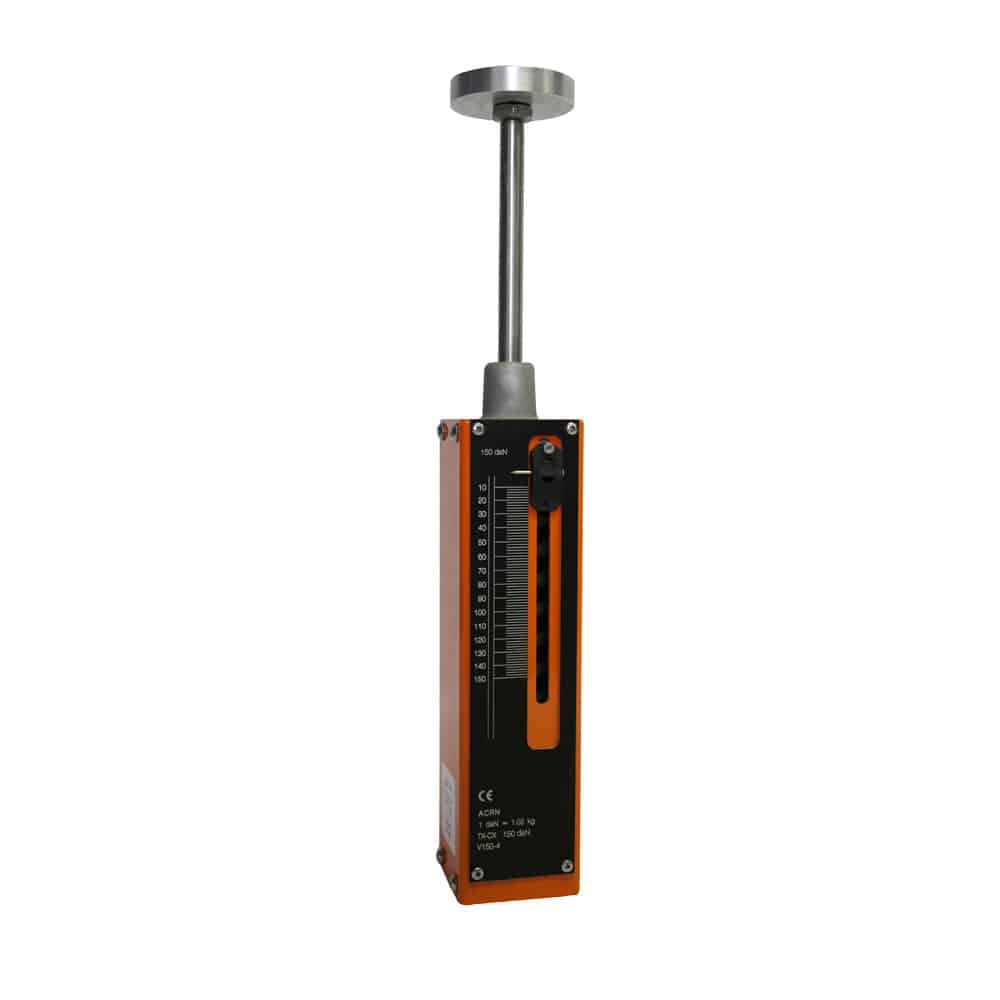Mechanical dynamometer
Simple and robust
Our range of mechanical force gauges is designed to meet the most demanding tensile and compression requirements.
Discover our mechanical dynamometers
Electronic model

TX Mechanical force gauges
Compact and robust, with a stop to protect it from overloads, the TX mechanical force gauge measures tensile forces.
Without any delicate mechanism, they are insensitive to variations in temperature and to bad watcher.
Electronic model

Mechanical force gauges CX
Compact and robust, with a stop to protect it from overloads, the CX mechanical force gauge measures compressive forces.
The advantages of our mechanical force gauges

Accurate and easy to read
- Accuracy of +/- 4% with instant reading on a graduated scale.
- Disengageable maximum index for optimal measurement tracking

Robustness and reliability
- Mechanical design with no fragile mechanisms, guaranteeing high resistance to temperature variations and the elements.
- Safety factor 5 for safe, long-lasting use.

French manufacturing and certification
- Designed and manufactured in France, guaranteeing quality and compliance with standards
- Supplied with a calibration certificate to ensure traceability and measurement reliability
Comparison table of our mechanical dynamometer range
Frequently asked questions about mechanical dynamometers
What is a mechanical dynamometer?
A mechanical dynamometer is a measuring device used to check and control the torque or force applied to a mechanical component. Unlike digital force gauges, it operates without electronics and is often used for its robustness and reliability.
Why choose a mechanical dynamometer rather than a digital model?
A mechanical dynamometer is ideal for demanding environments where electronics could be affected (dust, humidity, extreme temperature). It is also appreciated for its durability and lack of need for a power supply.
How accurate is a mechanical dynamometer?
Accuracy depends on the model, but mechanical force gauges generally offer excellent measurement repeatability, with a tolerance of around ±1% to ±2% of full scale.
What are mechanical dynamometers used for?
They are widely used in industry, aerospace, automotive, quality control and any application requiring precise control of torque or applied force.
How does a mechanical dynamometer work?
It uses a system of calibrated springs or elastic deformation to measure the force applied. The measuring needle displays the value directly on a graduated dial.
Can a mechanical dynamometer measure different units?
Yes, depending on the model, it can display measurements in Newton-meter (N-m), kilogram-force (kgf) or pound-force (lbf). Some models also feature double graduation.
How long does a mechanical dynamometer last?
A well-maintained mechanical dynamometer can last for decades, thanks to its robust mechanism and the absence of sensitive electronic components.
Contact us
Need advice or a personalized quote?
At ACRN, we know that every application requires precise, customized solutions. Our force gauges, whether new or adapted to your existing equipment, are designed to meet your quality and performance requirements.
✅ Why choose our force gauges?
- Unrivalled precision for reliable measurements.
- Customized options to suit your specific needs.
- Technical support from experts in the field.
Please fill in the form opposite:
- Ask your questions.
- Ask for a quote.
- Seek expert advice.
📞 An urgent question? Contact us directly at 0232808140 or contact@acrn.fr.
We’re here to help you make your projects a success!
